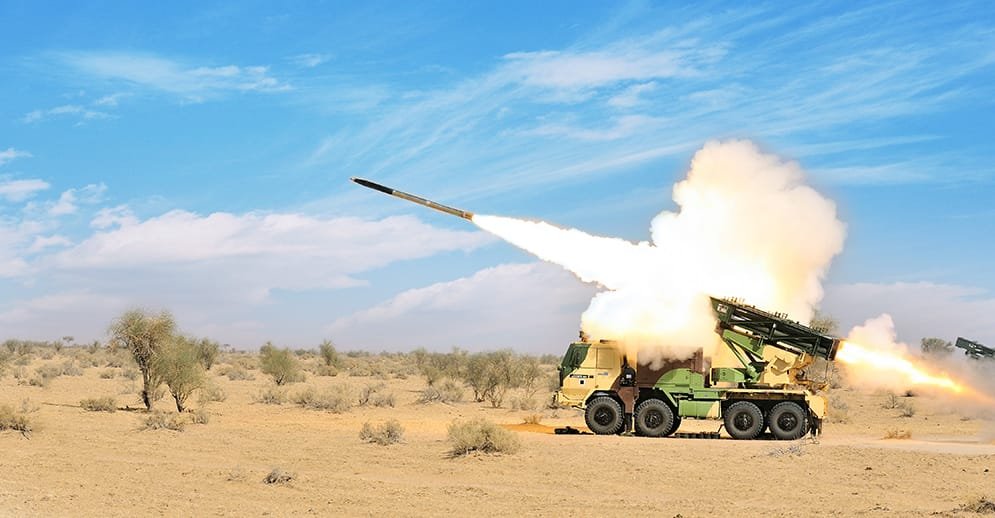Banks’ post-merger outlook
S&P Global Ratings had revised its outlook on the ‘BB+’ long-term issuer credit ratings on Syndicate Bank to positive from stable. At the same time, S&P revised outlook on the ‘BBB-‘ long-term issuer credit ratings on Indian Bank to negative from stable.
“We affirmed our ratings on Syndicate Bank and Indian Bank, as well as our ‘BB+’ long-term issuer credit ratings on Union Bank of India,” said the rating agency on 11 Sept 2019.
The outlook on Union Bank of India remains stable. It also affirmed the short-term issuer credit ratings and the long-term issue ratings on the senior unsecured debt of these banks.
“Our rating actions follow the Indian government’s announcement to merge 10 state-owned banks into four and infuse capital into the acquiring banks,” said S&P.
“The government’s rationale for the mergers, additional capital infusion, and tweaks to public-sector board powers are credit positive at a system level, in our view,” said S&P.
However, the impact varies depending on the current ratings of the individual banks and the size and financial performance of the amalgamated entities.
The ability of the banks to successfully merge their information technology systems, human resources, corporate culture, and rationalize branch network and realign nonperforming loans (NPLs) will also be key credit factors.
“We believe the merger process will take up the bulk of management’s bandwidth over the next 12-18 months, which could affect interim growth and profitability,” it said.
On Aug. 30, 2019, the Indian government announced it will consolidate 10 state-owned banks into four in a bid to boost credit in the economy and create economies of scale to improve global competitiveness.
The following banks will merge:
Union Bank of India (BB+/Stable/B) to absorb Andhra Bank and Corporation Bank;
Syndicate Bank (BB+/Positive/B) to be absorbed by Canara Bank;
Indian Bank (BBB-/Negative/A-3) to absorb Allahabad Bank; and
Punjab National Bank (PNB) to absorb Oriental Bank of Commerce (OBC) and United Bank.
In addition, the government has allocated Rs.552.5 billion to 10 public-sector banks including the ones intended to absorb other banks as part of the merger.
The allocation is Rs.117 billion for Union Bank of India, Rs.25 billion for Indian Bank, Rs.65 billion for Canara Bank and Rs.160 billion for Punjab National Bank.
S&P believes the banks will use part of this capital to clean up merged balance sheets.
The rating agency believes the proposed mergers are consistent with the government’s objective of having fewer but larger and stronger public sector banks.
Following the consolidation, India will have 12 public sector banks, instead of 18 currently and 27 in 2017.
This spate of mergers follows the merger of Bank of Baroda with Vijaya Bank and Dena Bank in 2018 and the merger of State Bank of India (SBI) with its associates and Bhartiya Mahila Bank in 2017.
The combination of PNB with United Bank and OBC will be the second-largest lender after SBI.
Union Bank’s and Indian Bank’s balance sheet size will almost double post the merger.
The mergers are subject to board approvals. “We expect board approvals to be forthcoming given the government has already undertaken consultation and maintains majority control in these banks,” said S&P.
It continues to factor a very high likelihood of support for government-owned banks in India.
S&P believes that the government treats the banks as one family and has not shown any material differentiation among these banks when it provides policy guidance, conducts performance reviews, or infuses capital.
“We believe that this support framework will remain unchanged. We continue to believe that the government of India would provide timely and sufficient extraordinary support in the event of these banks’ financial distress,” said S&P.
This assessment is driven by their very strong link with the government and their very important role to the government.
The proposed consolidation and capital infusion could help resolve the immediate balance sheet problems of public sector banks.
“However, unless these banks implement substantial reforms to improve risk management, the need for capital will recur, in our view,” S&P cautioned. Fiinews.com
SYNDICATE BANK
“The ‘BB+’ rating on Syndicate Bank reflects our expectation of very high likelihood of government support. The bank’s funding and liquidity profile is in line with the industry average,” said S&P.
Syndicate Bank’s small market share, and stressed asset quality, capitalization, and earnings constrain the rating.
The rating agency believes that the merger with Canara Bank could enhance the combined bank’s business franchise and market position in the next 18-24 months.
The combined bank will be among the five largest banks in India compared with Syndicate Bank’s current ranking of 14th in terms of asset base. In addition, as the bank reaps synergies from the merger and recovery of its stressed assets, S&P expects profitability to improve gradually.
“This in our view can enhance its business profile, but we expect it to improve only gradually post-merger,” it said.
“Moreover, we do not expect any major downside to Syndicate Bank’s financial profile.
“We expect the asset quality for the combined entity to be similar if not better than Syndicate Bank’s current performance. We expect that the merger related capital will boost the capital adequacy of these banks and help them clean their balance sheets and show moderate growth.”
The positive outlook on Syndicate Bank reflects S&P views that there is a one-third probability that post-merger the combined entity’s business profile could benefit from its enhanced franchise and size, and improvement in profitability in the next 18-24 months, without any material deterioration in the combined entity’s financial profile.
“We could raise the ratings in the next 18-24 months if we believe that the combined entity’s business profile has improved post-merger such that it is able to reap the benefits of branch rationalization and enhanced size, leading to improvement in profitability.
“We could revise the outlook to stable if, in our view, the combined entity’s business profile does not improve to a level that is commensurate with that of other large players in the industry, or if the improvement is accompanied by deterioration in the company’s financial profile.
“The deterioration in financial profile may occur if the combined entity’s asset quality declines sharply or if its capital position weakens.”
INDIAN BANK
The ‘BBB-‘ rating on Indian Bank reflects its stronger-than-average funding profile and better capitalization compared with the majority of its Indian peers. This is balanced by Indian Bank’s small market share and stressed asset quality.
“We expect Indian Bank’s capital, earnings, and asset quality to suffer following the merger with a much weaker Allahabad Bank,” said S&P.
As of 30 June 2019, Allahabad Bank’s reported NPL ratio was 17.4% in comparison to Indian Bank’s 7.3%, while common equity tier-1 ratio was 9.7% against Indian Bank’s 11.4%. Allahabad Bank’s profitability is worse, marked by losses over the past four years.
“We believe the major portion of the capital infusion may be utilized to make provisions for Allahabad Bank’s weak loans. While the merger improves Indian Bank’s market share to about 3.5% from 1.8% currently, it remains small in the Indian banking industry,” noted the rating agency.
Outlook
The negative outlook on Indian Bank reflects S&P views that there is a one-in-three chance of a downgrade by one notch over the next 18-24 months.
“We view the merger with the weaker Allahabad bank will potentially undermine Indian Bank’s asset quality and capitalization owing to the former’s high NPLs and lower common equity tier-1 ratio.
“We will lower the rating by a notch if Indian Bank’s risk-adjusted capital (RAC) ratio falls below 7% on a sustained basis in addition to the anticipated deterioration in asset quality post-merger.
“We would revise the outlook to stable if the bank can sustain the RAC ratio above 7%, possibly due to capital raising and improvement in earnings.”
UNION BANK OF INDIA
The ‘BB+’ rating on Union Bank reflects S&P expectations of a very high likelihood of government support. Union Bank’s weak asset quality, capitalization, and earnings constrain the rating.
“We believe the ratings on Union Bank will remain largely unchanged over the next 12 months.
“Our ratings on Union Bank have tolerance for potential deterioration in stand-alone creditworthiness on absorbing relatively weaker banks.”
The financial performance of Union Bank, Andhra Bank, and Corporation Bank has been constrained by substantial problem loans, high provisioning costs, and reported losses over the past few years.
“We believe the merger significantly improves the size and franchise of Union Bank, effectively doubling its market share to about 6%.
However, the bank will take more than two years to leverage on the scale and generate superior profitability.
“We believe earnings will remain a drag over our outlook horizon due to integration and provisioning costs, making Union Bank dependent on capital infusion from the government for growth.
“We expect the asset quality of the combined entity to be similar or somewhat weaker than Union Bank’s.”
Outlook
The stable outlook on Union Bank reflects our view that the bank’s financial profile post-merger will be similar to the current profile.
“We believe the benefits from the increase in size and franchise are balanced by the weak profitability and drag on earnings from provisioning costs over the next 12 months.
“We would lower the rating on Union Bank by a notch if the bank’s RAC ratio falls below 5% on a sustained basis, along with a deterioration in its asset quality or funding profile.
“We believe the bank’s capitalization could deteriorate due to high provisioning costs. In our view, the merged bank’s ability to mobilize low-cost deposits will be key to maintaining its funding profile, which could weaken on merging with banks with a lower current and savings account deposit ratio.
“We would consider an upgrade by a notch if Union Bank’s profitability improves and is comparable to that of large regional players. However, we view this as unlikely over the next 12-18 months,” said S&P. fiinews.com











